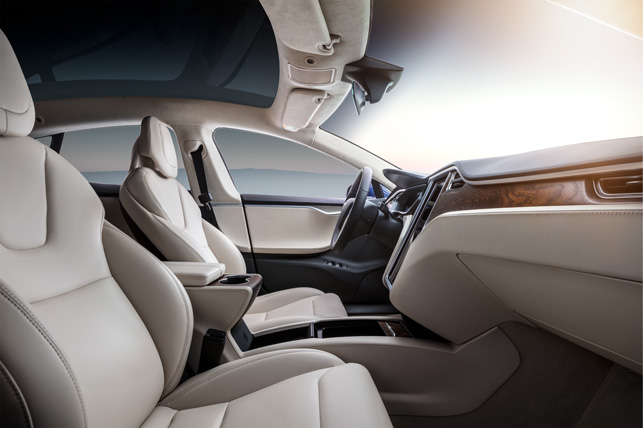Al Dean explores how the unstoppable rise of the autonomous vehicle is influencing automotive design and explores the impact this trend might have on the technology used in the world of product development

Imagine what happens when cars become autonomous and the driver is no longer the pilot, but just another passenger Image Credit: Tesla Motors
Earlier this year, the news that Ansys, master of all things simulation and analysis, was acquiring Optis – a French outfit that has a pretty high-end and specialised set of tools for simulating lighting – left a few folk scratching their heads.
Ansys is all about putting numbers against physical phenomena and exploring how digital models interact with the world around them. So why would it be interested in acquiring a software house known for developing some super high-end rendering and visualisation tools?
The reality is that Optis’ toolset focuses not only on the visualisation of physical environments, but also the measurement of those environments. But still, the world of light simulation seems disconnected from the world of FEA and CFD, so let’s consider the context of the purchase.
We’re moving, at an undefined velocity, towards the age of autonomous vehicles, in which vehicles move their driver, their passengers and their payload without a huge amount of direct driver interaction.
That’s a huge shift, both functionally as well as culturally, with many challenges to navigate along the way. But for the design industry (and specifically, car styling professionals), it makes for a particularly interesting shift.
At present, automotive interiors are developed around styling, safety and clarity of instrumentation, particularly as you move up the automotive food chain. These have become increasingly complex and sophisticated.
Today’s vehicles are not so much a steering wheel and a set of dials and gauges, but advanced infotainment systems, with tough screen devices, complex lighting schemes as you enter and exit the vehicle, and all manner of bells, whistles and switches that we don’t really understand.
Also, consider how those vehicles are acquired. The person who makes the selection is typically the driver. The whole design process for the car, both the exterior and interior is centred on them.
In the age of autonomy, the vehicle interior will become more and more important. Its design will arguably be on a more equal footing with the exterior styling – and so there will be a need for much greater analysis and simulation than ever went before
How well does the vehicle perform, what is its fuel economy, what does the exterior say about you as a driver and how does the interior make you feel? Can you see all of the gauges, the instrument cluster? Can you reach all of the controls you need? All of that feeds into the sales process.
But once you buy the car, most of your time is spent concentrating on the road ahead as you pilot your vehicle.
Now consider the rise of the autonomous vehicle. The majority of your road time is not going to be spent concentrating on the road ahead, but sat instead in a passenger space, without a huge amount to do.
So what do humans do when they have time on their hands? They carry out activities, they sit, they think and they start to investigate the world around them.
In the case of the autonomous car, it’s a cabin that they’re sat in, at leisure, for much longer periods of time.
In the age of autonomy, the vehicle interior will become more and more important. Its design will arguably be on a more equal footing with the exterior styling – and so there will be a need for much greater analysis and simulation than ever went before.
Now does that acquisition make sense?

Well, buckle up because Al Dean has some ideas
Default






